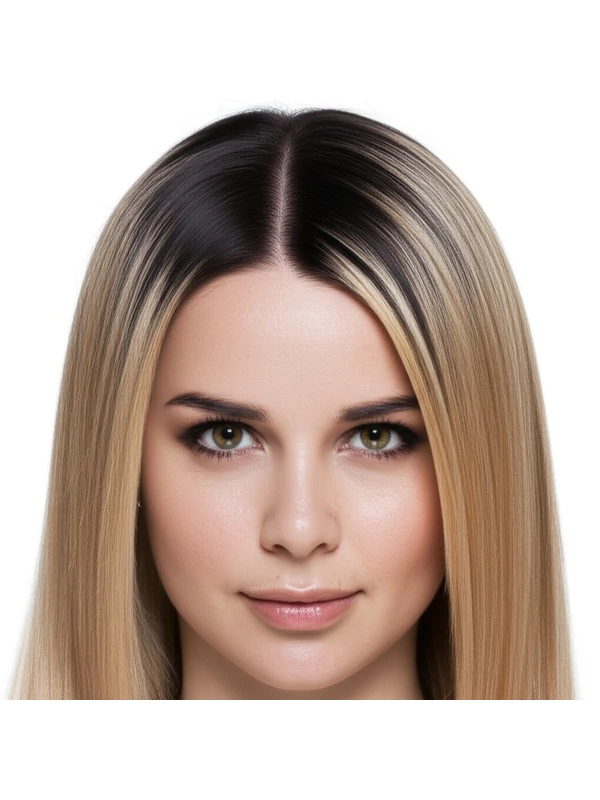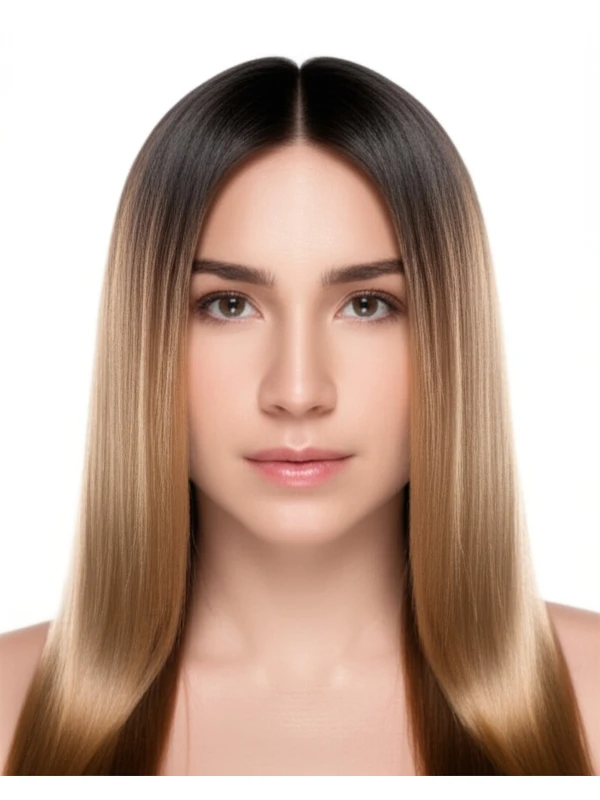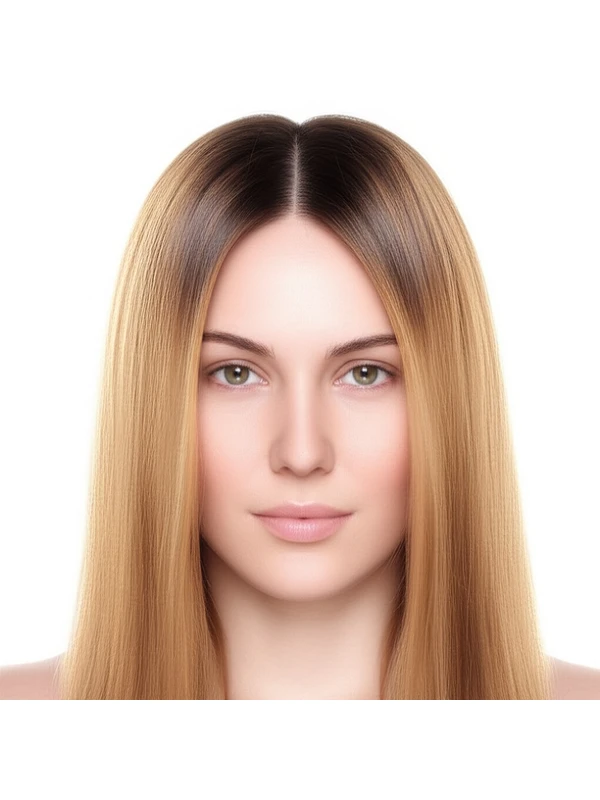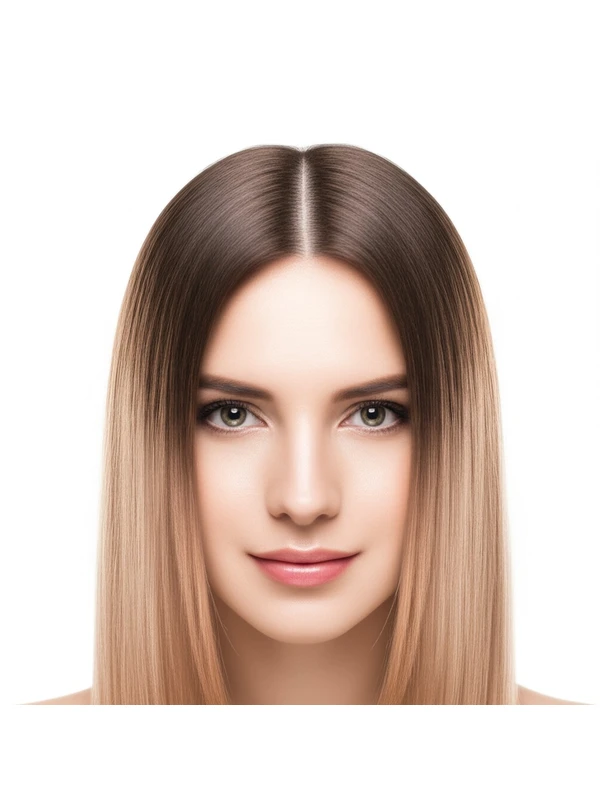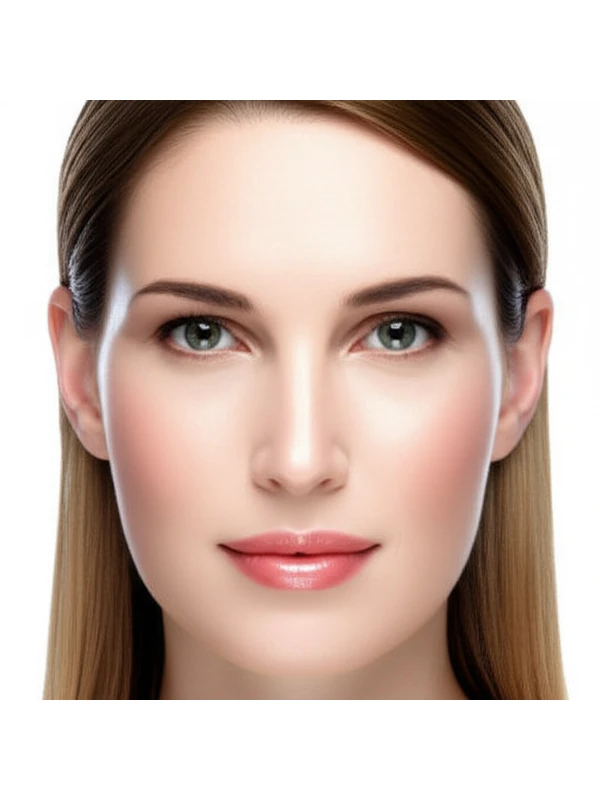#Root Smudge: A Guide to Seamless Color Blending
Root smudging is a popular hair coloring technique that creates soft, blended roots and a natural look. It's all about transitioning your root color into the lengths of your hair in a way that feels effortless. Here’s everything you need to know.
#1. What Is Root Smudge & How Does It Work?
A root smudge involves applying a slightly darker shade than the mid-lengths and ends, specifically at the roots. The stylist gently "smudges" this color downwards, blending it seamlessly into your natural root growth. This isn't a traditional highlight or single process; it’s about creating an illusion of depth and movement.
Tools & Products:
- Color: A shade 1-2 levels darker than the existing mid-shaft and ends.
- Brush: A smaller, angled brush for precise application is key.
- Foils (optional): Sometimes used to lift the base slightly before applying color, depending on desired intensity.
- Developer: The stylist will select a developer volume based on your hair's condition and desired result.
Placement & Timing:
The color is applied directly to the roots, focusing on the area where new growth appears. The stylist then uses sweeping motions or tapping techniques to blend the darker shade down into the lighter sections of your hair. Processing time varies depending on your natural color, hair texture, and desired intensity – usually 20-45 minutes.
#2. Best Use Cases: What Can a Root Smudge Achieve?
Root smudging is incredibly versatile! Here's what it’s great for:
- Dimension: Adds depth and dimension to flat or one-dimensional hair colors.
- Root Blur: Softens the line between your natural roots and colored lengths, minimizing the appearance of harsh regrowth.
- Face Framing: Strategically placed smudges can highlight and brighten facial features.
- Subtle Coverage: Can help camouflage a few grey hairs by blending them into the overall color. It's not designed for full gray coverage though.
#3. Who Does Root Smudging Suit?
This technique is adaptable, but some factors make it particularly flattering:
- Natural Color Level: Works well on levels 2-7 (light brown to dark blonde). Those with darker starting colors may require pre-lifting for optimal results.
- Undertone: Can complement both warm (golden, copper) and cool (ashy, silver) undertones depending on the color choice.
- Hair Type/Texture: Suitable for all hair textures – straight, wavy, curly, coily! The blending effect is visually appealing regardless of curl pattern.
- Density: Works well with both fine and thick hair. On finer hair, it adds visual volume; on thicker hair, it creates a softer look.
- Length: Looks fantastic on all lengths – short bobs to long layers.
- Lifestyle: Ideal for those who want a low-maintenance color that grows out gracefully.
#4. Root Smudge vs. Similar Techniques
Understanding the differences is key:
- Balayage & Foilyage: Balayage uses freehand painting techniques, while foilyage incorporates foils to lift and create more contrast. Both offer a brighter overall effect than root smudging. Root smudge focuses on blending the roots specifically.
- Highlights: Traditional highlights involve precisely placed sections of hair lightened throughout, creating distinct strands of lighter color. A root smudge is softer and less defined.
- Shadow Root: Similar to root smudging, but with a more pronounced darker shadow at the roots for an even more blended effect. Shadow roots are generally significantly darker than the lengths. Root smudges tend to be closer in tone to the mid-lengths.
#5. Maintenance & Longevity
- Salon Timing: Typically every 4-6 months, depending on regrowth and desired intensity.
- Toner/Gloss Refresh: A gloss or toner might be recommended every few months to maintain color vibrancy and correct any unwanted tones (e.g., brassiness).
- Grow-Out Behavior: Root smudging is designed for a soft grow-out, with minimal harsh lines as your roots reappear.
- Budget/Time Planning: Expect salon visits to take 1.5 - 3 hours and cost $100-$350+ depending on location and stylist experience. Toner/glosses are typically shorter appointments (30-60 minutes) costing around $50-$125+.
#6. At-Home Care Tips for Root Smudged Hair
- Wash Cadence: Reduce washing to 2-3 times per week to preserve color vibrancy.
- Heat Protection: Always use a heat protectant spray before applying any styling tools (blow dryer, straightener, curling iron).
- Color-Safe Care: Use shampoos and conditioners specifically formulated for colored hair. Sulfate-free options are generally best.
- Deep Conditioning: Incorporate deep conditioning treatments weekly to keep hair hydrated and healthy.
#7. Pros & Cons of Root Smudging
Pros:
- Low maintenance grow-out
- Adds dimension and softness
- Versatile for various hair types and lengths
- Minimizes the appearance of root regrowth
- Can enhance facial features
Cons:
- May not be suitable for those wanting significant color change or full grey coverage.
- Requires a skilled stylist for best results.
- Color can fade if proper at-home care isn't followed.
#8. Salon Consultation Script Prompts
When discussing a root smudge with your stylist, consider these questions:
- What is my natural hair color level and undertone?
- What shade of color would complement my skin tone and features?
- How much contrast do I want between my roots and lengths?
- Am I looking for subtle dimension or a more noticeable effect?
- Can you show me examples of root smudge styles that suit my hair type and face shape?
- What is the expected maintenance schedule, including toner/gloss appointments?
#9. Frequently Asked Questions
- Can I do a root smudge myself at home? While DIY kits exist, it's highly recommended to have this done by a professional for best results and to avoid unevenness or damage.
- Will a root smudge cover my grey hairs completely? No, it blends them but doesn’t provide full coverage. If you need complete gray coverage, consider a single process color.
- How long will the color last? Color longevity varies depending on hair porosity and aftercare, but expect it to fade gradually over 4-6 months.
- What if my roots are very dark? Pre-lifting may be necessary to create enough contrast for a blended effect. Discuss this with your stylist during the consultation.
- Can I get a root smudge on previously highlighted hair? Yes, but it's crucial that your stylist assesses the condition of your hair and adjusts the color accordingly.
- What’s the difference between a root shadow and a root smudge if they look similar? Shadow roots are generally darker at the base than smudges which tend to be closer in tone to the mid-lengths, creating a more dramatic transition.
- Will this damage my hair? As with any coloring process, there's some potential for damage. A skilled stylist will use appropriate developer and techniques to minimize impact. Follow at-home care tips to keep your hair healthy.
- Can I get a root smudge if I have very fine/thin hair? Absolutely! Root smudging can actually add the illusion of volume on finer hair, creating depth without weighing it down.
#Root Smudge: Effortless Color with a Soft Transition
A root smudge is a low-maintenance hair coloring technique that creates a gradual transition from your natural roots to lighter ends. It's all about blending, and it’s fantastic for anyone wanting to soften the line between their base color and highlights (or even just add dimension without a harsh regrowth look). Think of it as a more forgiving version of balayage or ombre.
#Who Looks Amazing with a Root Smudge?
The beauty of root smudges is how adaptable they are. However, certain features really make this style shine:
Face Shape:
- Round Faces: A root smudge that’s lighter around the crown and temples can add vertical lift, making your face appear longer and more sculpted. Avoid too much lightness directly at the jawline as it could widen the face further.
- Square Faces: Softening a square jaw with strategically placed smudged highlights around the cheekbones is incredibly flattering. Avoid sharp, angular placements near the temples.
- Oval Faces: Lucky you! Most root smudge styles will work beautifully on oval faces – experiment and see what makes you feel your best.
- Heart-Shaped Faces: Root smudges that are lighter around the chin area can balance a wider forehead, creating harmony.
- Long Faces: A more uniform root smudge across the head will avoid elongating the face further. Consider shorter layers to add width.
Body Proportions & Height: Shorter individuals might benefit from root smudges that are lighter around the face to create an illusion of height. Taller people can pull off richer, deeper tones throughout their hair for a more balanced look.
Texture/Density Mapping:
- Fine Hair (low density): A softer, more diffused smudge is best to avoid making your hair appear even thinner. Focus on adding dimension rather than significant lightening.
- Medium Hair (medium density): You have the most flexibility! Experiment with different placement and intensity levels.
- Thick Hair (high density): Root smudges work wonderfully to break up thickness and add movement. A more defined smudge can be incorporated if desired.
- Coily/Curly/Wavy Hair: The root smudge technique needs extra consideration for curl patterns as color processing is different at the roots vs. ends. A skilled stylist experienced with your hair type must be consulted to avoid damage and ensure even saturation of curls or waves.
#Shades & Placement: Finding Your Perfect Root Smudge
The placement and tone are key! Here’s a breakdown:
- Placement: Highlights can start higher up for a more blended look, or closer to the roots for a bolder contrast. Discuss your desired level of transition with your stylist.
- Tones:
- Warm Tones (gold, copper, caramel): Add warmth and radiance – especially beautiful on those with warm skin tones.
- Cool Tones (ash, beige, silver): Create a more modern and sophisticated look - best for cool or neutral skin tones.
- Neutral Tones: A great choice if you’re unsure! They complement most skin tones and offer a balanced appearance.
#Maintenance & Grow-Out
This is where the “low maintenance” aspect really shines, but it's not no maintenance.
- Maintenance Cadence: Expect salon visits every 12-16 weeks to refresh the color and maintain the blended effect. Root touch-ups are minimal – focusing on blending the new growth into the existing smudge.
- Grow-Out Roadmap: As your roots grow out, they simply blend seamlessly with the lighter ends. No harsh lines! This is especially noticeable if you have a darker natural root color.
- Home Care: Use color-safe shampoo and conditioner to prolong vibrancy. Deep conditioning treatments are essential, particularly for curly/coily hair.
#FAQs: Root Smudge Edition
- Can I do a root smudge myself at home? While DIY kits exist, it's strongly recommended to see a professional, especially if you have previously colored or textured hair. Color placement is crucial for the desired effect and avoiding damage.
- How long does a root smudge appointment take? Typically 2-3 hours depending on your hair length, density, and desired level of lightening.
- Is a root smudge damaging to my hair? The process involves color processing, which can cause some dryness or breakage if not done correctly. A skilled stylist will use protective measures and appropriate products for your hair type.
- What’s the difference between a root smudge and balayage? Balayage is generally more freehand painting with a wider range of tones, creating a more dramatic effect. Root smudges are about softening the line – a gentler approach.
- Can I get a root smudge if my hair is already heavily highlighted? Yes! A stylist can blend and soften existing highlights to create a seamless, blended look that mimics a root smudge.
- I have very dark hair (level 1-3). Can I still do a root smudge? Absolutely! It will require more sessions to lift the base color gradually while maintaining hair health. Be prepared for a longer processing time and potentially multiple appointments.
#Important Note: Consult with a Professional
This guide provides general information. Always consult with a qualified hairstylist who understands your hair type, texture, density, and desired outcome before undergoing any chemical process.
